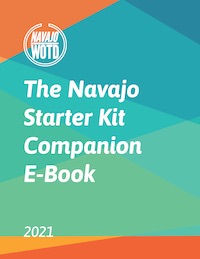naa'ahóóhai
chicken or rodeo
nah ah hoh ha ee
The word naa’ahóóhai translates to chicken.
“Naa’ahóóhai séłt’é” is how you would say “I cooked chicken.”
This word is also used to describe other fowl, for example “naa’ahóóhaiłbáhí” or ‘gray chicken’ means partridge.
Another usage for this word is rodeo.
Chicken pulls, in which a horseback rider races by a buried chicken and attempts to snatch it up, were a popular event at the early emergence of rodeo contests among Navajos.
Used for rodeo, naa’ahóóhai can be truncated to simply ahóóhai.
